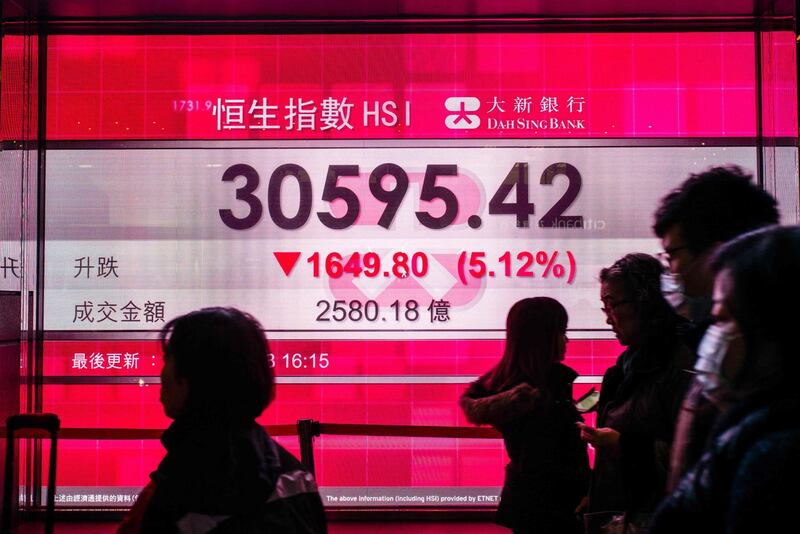As global equity investors reel from the biggest sell-off in two years, nowhere has the pain been more acute than in China and Hong Kong.
Benchmark indices for the world’s second- and fourth-largest stock markets have fallen faster than any of their major peers since the global rout began late last month. With the losses deepening on Friday to more than 12 per cent, both markets were poised to snap their longest-ever streaks without a 10 per cent correction.
The sudden tumble, China’s worst since its 2015 market collapse, has shocked many investors who had grown accustomed to the steadying effect of government intervention over the past two years. But after guiding the Shanghai Composite Index to its calmest bull market in history, authorities are now displaying a higher threshold for pain as they seek to snuff out moral hazard and contain risk in the nation’s US$16 trillion shadow-financing system.
The big question is whether stocks are now signaling trouble ahead for the world’s second-largest economy. Most analysts are still sanguine, with the consensus estimate holding steady at 6.5 per cent growth for 2018. Optimists point to the corporate bond market’s relative resilience over the past two weeks and a yuan that still trades near its strongest in two years against the dollar, despite losing some ground in recent days. Investors aren’t yet showing signs of 2015-style panic.
Still, market declines in China have a habit of snowballing. Many observers are bracing for more volatility as liquidity conditions tighten before the Chinese New Year break that starts next week. On average, declines of 10 per cent or more in the Shanghai Composite have lasted two months before a reversal of the same magnitude.
“We are still in the depth of market volatility as sentiment was hurt by the double whammy of US market turmoil and deleveraging efforts at home,” said Wu Kan, a Shanghai-based fund manager at Shanshan Finance. “Risk appetite has dropped sharply and I don’t think the situation will get any better before the Chinese New Year holiday.”






